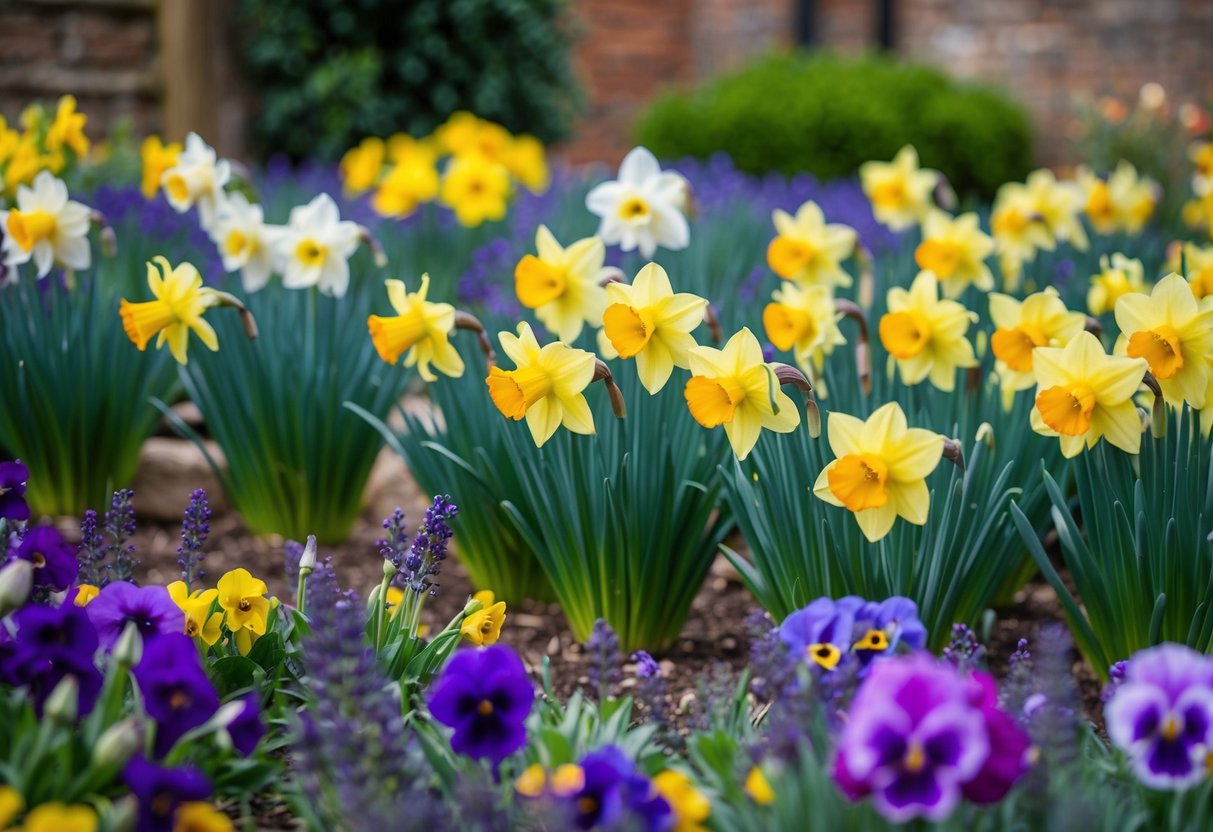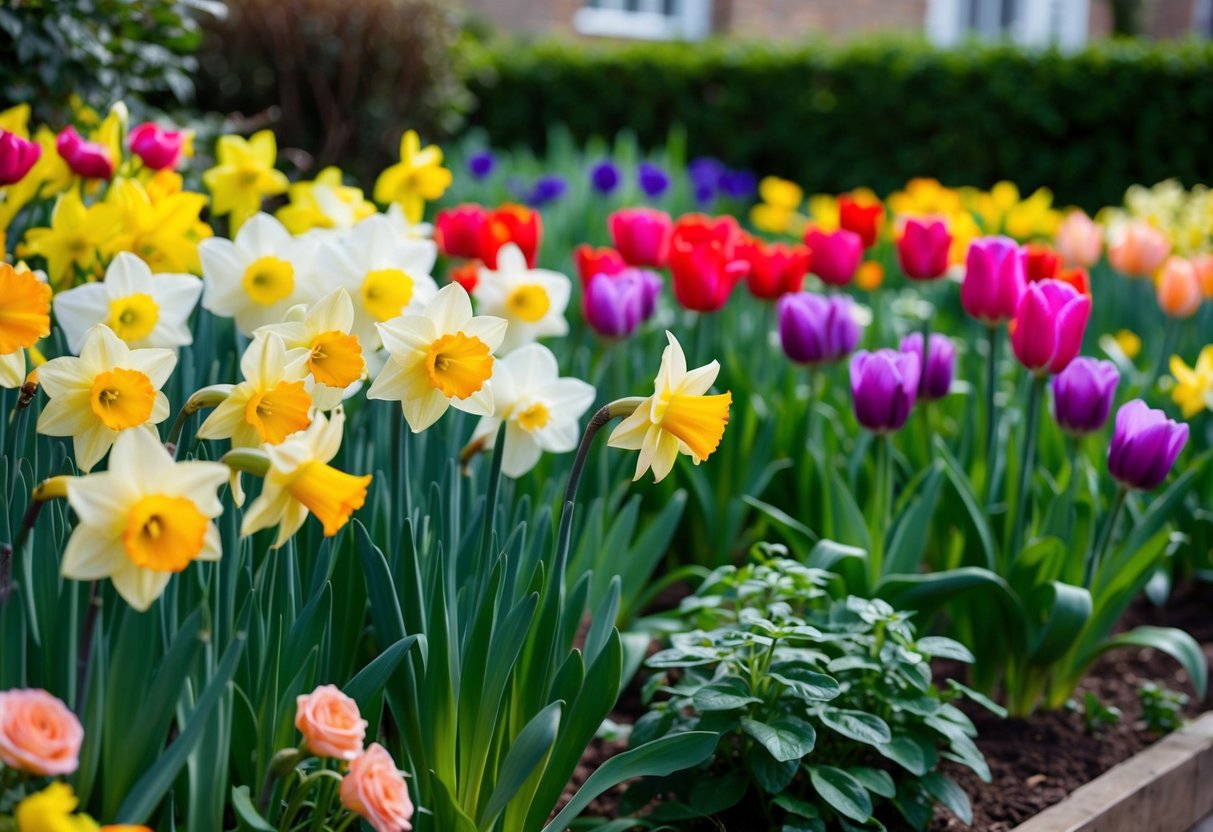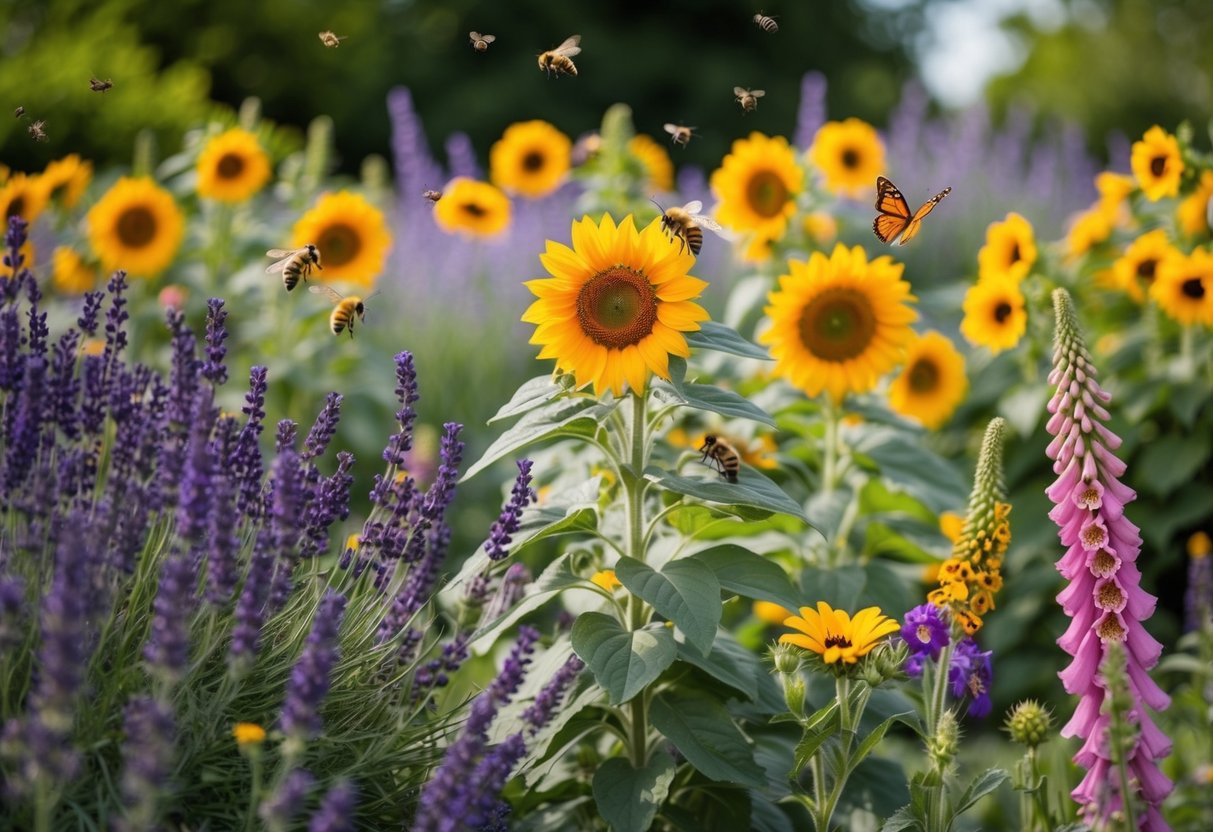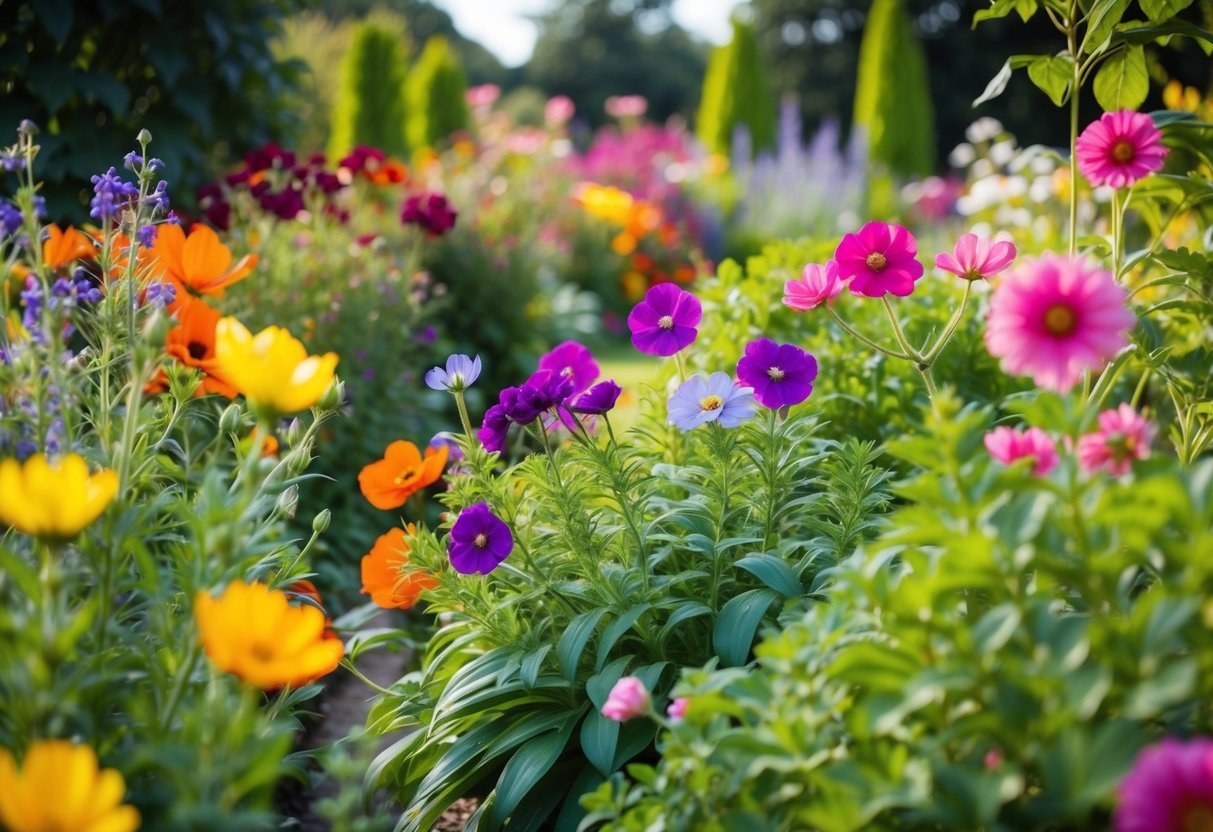What are the Easiest Flowers to Grow in the UK? A Simple Guide for Gardeners
Are you thinking about adding some color to your garden without too much fuss? Growing flowers from seed might be just what you need. It’s a delightful way to enjoy gardening, especially if you’re a beginner. Some of the easiest flowers for you to grow in the UK include sunflowers, nasturtiums, and nigella. These colorful blooms are not only simple to plant but also rewarding to watch as they flourish.

Sunflowers are a fantastic choice if you want something bright and cheerful. These towering beauties can reach impressive heights and are easy to cultivate. For something more colorful and quick-growing, consider nasturtiums. They can effortlessly spill out of containers and add a splash of vibrant color to your garden. Nigella, also known as love-in-a-mist, offers another easy option. You can simply scatter its seeds on the soil, and you’ll have charming blooms in no time.
Whether you’re new to gardening or just looking for low-maintenance options, these flowers are perfect for your UK garden. With minimal effort, you’ll have a garden that’s not only beautiful but also a reflection of your green thumb. Dive into the world of flower gardening and watch your outdoor space transform into a lively oasis.
Choosing the Right Flower Seeds

When choosing flower seeds for your garden in the UK, it’s important to consider both the type of flowers and the local climate. Understanding the differences between annual and perennial flowers can help make your garden both beautiful and easy to maintain.
Annual vs Perennial Flowers
Annual flowers like sunflowers and nasturtiums are plants that complete their life cycle in one season. They’re ideal if you want quick results and lots of vibrant color. Sunflowers are tall and dramatic, making them great for borders. Nasturtiums not only look great but are also edible, adding a splash of color to salads.
Pansies and pot marigolds are other popular annual options that grow easily in the UK. They require sowing each year, which gives you the chance to try new varieties and colors. Annuals can fill in gaps in your garden and keep it looking lively.
In contrast, perennial flowers such as aquilegia and cornflowers come back year after year. Once established, they require less maintenance and effort. These long-lasting plants are perfect for gardeners who want a reliable display with less work over time. You plant them once and enjoy their beauty for years to come.
Considering the UK Climate
The UK climate varies but is generally mild and wet, which is great for many types of flowers. It’s crucial to choose seeds that match these conditions. Marigolds are hardy and thrive in various UK climates, offering sunny yellow blooms that withstand the rain. They are perfect for those wetter months.
Pansies are another excellent choice as they tolerate cooler temperatures well. They can bloom even in early spring, brightening up your garden when many other plants are still dormant. Choose hardy varieties to ensure they thrive in the UK’s unpredictable weather.
When picking seeds, look for ones labelled as suitable for UK gardens. These options will stand up better to local conditions, making them easier to grow successfully.
Planting and Germination Tips

Growing flowers from seed in the UK can be a satisfying experience. It’s essential to pay attention to where you start your plants, how you prepare the soil, and how you look after your seedlings. These steps make a big difference in the success of your blooming garden.
Starting Indoors vs Outdoors
Starting seeds indoors gives you a head start on the growing season. You can use containers like seed trays or peat pots. Placing them on sunny windowsills ensures they get ample light. This method is ideal for plants like geraniums and lavender that need warmth to germinate.
Outdoor sowing is best for hardier flowers. Window boxes are great for direct sowing of tough annuals like nasturtiums. Direct sowing can save time and avoid transplant shock. Ensure the last frost has passed before sowing directly into the soil.
Soil Preparation and Seed Sowing
Proper soil preparation is crucial for successful germination. Use well-draining soil rich in organic matter. You can mix compost to improve soil quality. Remove rocks and debris to provide a smooth surface. Leveling the soil helps tiny seeds stay in place.
When sowing, follow the seed packet instructions for depth. Lightly cover seeds with soil and gently press them down. Ensure there’s enough space between seeds for growth and airflow. Consistent soil contact aids germination for plants like calendula and celosia.
Watering and Feeding Seedlings
Watering your seedlings correctly helps them develop strong roots. Water the soil gently, ensuring consistent moisture without waterlogging. Over-watering can rot seeds and stop them from sprouting. Under-watering can dry out tiny seeds, halting germination.
Feed seedlings dilute liquid fertilizer once they have a few true leaves. This provides essential nutrients for robust growth. Monitor for pests like slugs, which love young plants. Protect seedlings by covering them lightly or setting up barriers around your flower beds.
Maintaining these practices encourages healthy plants ready to thrive in your UK garden.
Caring for Your Flowering Plants

Getting the most out of your flowering plants, like sweet peas, zinnias, or marigolds, involves understanding their specific needs. Focus on providing the right amount of sunlight, proper watering, dealing with any potential pests or diseases, and offering support for taller and climbing varieties.
Sunlight and Watering Needs
Most flowering plants thrive in full sun. This includes plants like zinnias and cosmos, which generally need around six to eight hours of sunlight each day. If you’re growing plants in a cottage garden, ensure they are positioned where they can receive ample light. Adjust your placements depending on the available sunlight in your garden.
Watering is crucial. Keep the soil consistently moist, but avoid overwatering. Sweet peas, for example, appreciate regular watering, especially during dry spells. Water your plants early in the morning to allow leaves to dry and prevent diseases. Use mulch to help your soil retain moisture and reduce evaporation.
Dealing with Pests and Diseases
Regularly check your plants for any signs of pests or diseases. Common pests include aphids and slugs, which can damage flowers like marigolds. Hand-picking or using natural treatments like neem oil can help control these pests. Avoid using harsh chemicals that may harm beneficial insects.
Promote healthy plants by keeping their environment clean. Remove any fallen leaves and debris to prevent disease. Rotate your plants yearly to reduce the buildup of soil-borne pathogens. If you notice issues like spots or wilting in leaves, identify the problem quickly and treat it with appropriate measures.
Supporting Tall and Climbing Flowers
Some flowers like morning glory and sweet peas require support as they grow taller. Use stakes, trellises, or cages to provide this support. Place supports early on to avoid damaging roots later in the season.
For climbing varieties, ensure the supports are strong enough to withstand wind and rain. Training these plants to climb can also improve air circulation and sunlight exposure, reducing the risk of disease. Use soft ties to secure stems without damaging them as they grow.
Attracting Pollinators and Wildlife

Supporting pollinators like bees and butterflies enhances your garden’s health. You can achieve this by selecting specific flowers and creating welcoming habitats for beneficial insects.
Choosing Pollinator-Friendly Flowers
Select flowers that attract pollinating insects to your garden. Consider planting Nigella, also known as love-in-a-mist, which blooms with delicate blue flowers. It’s easy to grow and bees love it. Another option is Calendula, which features bright orange petals. These flowers are not only beautiful, but they also provide nectar for pollinators.
Phlox and Echinacea are fantastic choices, as their vibrant blooms attract butterflies and bees. Consider Salvia and Helenium for a long-lasting splash of color and reliable nectar sources.
Arrange these flowers in clusters to make it easier for pollinators to find them. Mixing a variety of flowers ensures you’re providing diverse nectar options throughout the seasons.
Creating a Habitat for Beneficial Insects
Design a space that welcomes beneficial insects by including a variety of plants. Heuchera, with its colorful foliage and small blooms, provides shelter for tiny bugs. Adding a shallow dish with water and stones can give pollinators a quick drink while they’re visiting your garden.
Leave small areas of your garden a bit untidy. Fallen leaves and small piles of wood create habitats for insects that help pollination. Consider setting up a “nectar café” by planting a range of flowers that bloom at different times. This keeps pollinators coming back for more.
By caring for your garden in these ways, you’ll create a welcoming environment for both pollinators and other helpful insects.
Enjoying the Blooms

Growing flowers in the UK can be rewarding, offering vibrant colors and fresh bouquets right from your garden. You can create stunning displays by selecting the right flowers for cutting and ensuring year-round beauty with seasonal planning.
Cutting Gardens for Fresh Bouquets
Creating a cutting garden allows you to enjoy fresh bouquets anytime. Choose flowers like hardy geraniums and eschscholzia, also known as California poppies, for their vibrant colors and ease of growth. Eschscholzia thrive in various soils, providing bright blooms.
Perennial plants, such as poppies, offer repeated blooms. These plants are ideal for a cutting garden, with their stunning flowers perfect for displays. To keep your garden blooming, plant different species that flower at various times, ensuring a constant supply.
Poppies and other spring flowers can be planted to ensure early-season color, while summer and autumn perennials extend the season. The RHS recommends choosing a mix of annuals and perennials for continuous flowering. Regular cutting encourages more blooms, keeping your garden vibrant and your vases filled.
Seasonal Considerations for Continuous Color
Ensuring continuous color in your garden requires planning for seasonal changes. Start with spring-blooming flowers, such as daffodils and tulips. These early spring flowers provide a burst of color.
For a summer show, consider plants like geraniums and poppies. They flourish in the UK climate, offering long-lasting blooms. Planting a variety of species suited to each season will help achieve continuous blossoming. Hardy geraniums, with their long blooming period, are an excellent choice.
As autumn approaches, include late-bloomers like asters and chrysanthemums. This ensures your garden remains colorful even as temperatures drop. By planning carefully and choosing plants adapted to the UK’s conditions, you can enjoy a garden that delights throughout the year.







